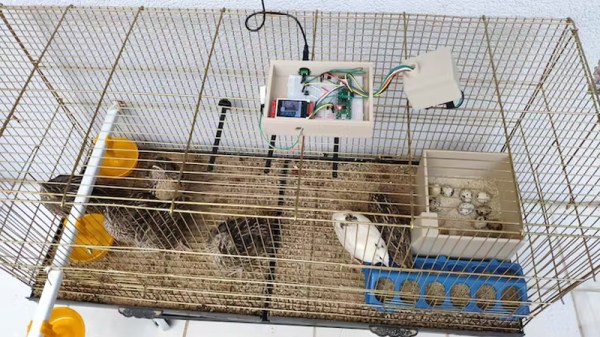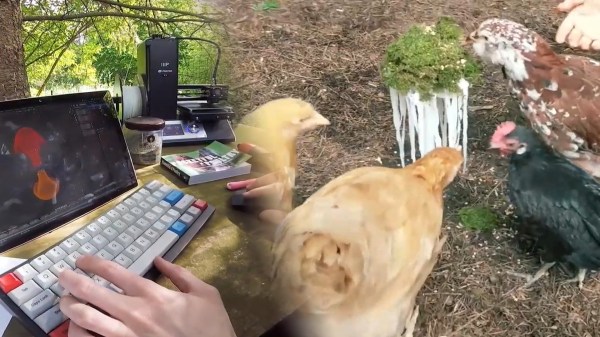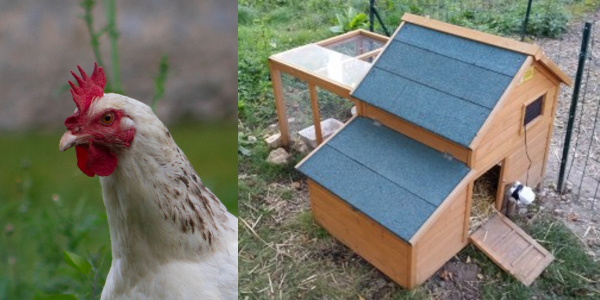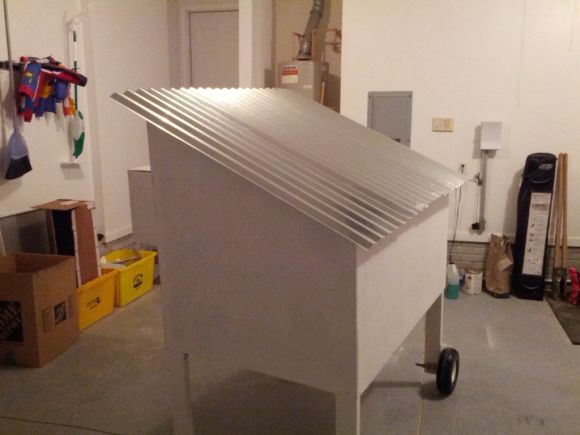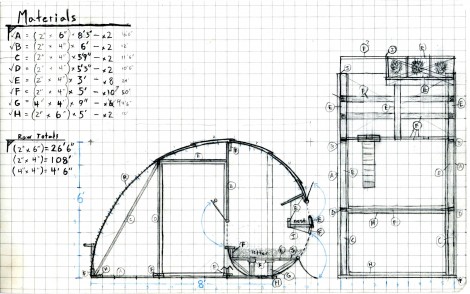Keeping chickens in predator-prone areas demands serious fortifications, but even the most robust coop can become a hassle without automation. That’s where [lcamtuf] steps in with his Chicken Squisher 3000, a clever DIY automatic door mechanism that opens and closes based on ambient light levels.
The chicken coop he previously built did not include a mechanism to automatically close the inner door at night, meaning that arrangements would have to be made should [lcamtuf] want to leave town for a couple of days. Not wanting to go with a commercial option for this door as that would require a good deal of modifications to the original door setup, the Chicken Squisher 3000 adds minimal parts to the existing door to now open and close the door at dawn and dusk.
Using a 12 V DC motor with a gear reduction, he was able to generate more than enough torque to open and close the thick wooden door. Instead of a complex geared rack and pinion setup, [lcamtuf] has the motor mounted to a smooth rod that then applies force across the swing of the door attached with a rod end bearing. Driving the door’s automation is an AVR16DD14 microcontroller which is used to read the NSL-A6009 light sensor. [lcamtuf] uses a DRV8231 motor driver for controlling power going to that 12 V motor with the added benefit of being able to adjust stall torque to dial in a value strong enough to overcome the wooden door’s friction, but weak enough to not endanger any of his birds. There are also buttons on the metal enclosure used to override the light sensor should he want to override it manually.
Thanks, [lcamtuf], for sending in your latest weekend project; we love the resourcefulness of using just a handful of cheap parts to make a robust solution for your coop. If you haven’t seen them yet, be sure to check out some of our other chicken coop door hacks featured before.





